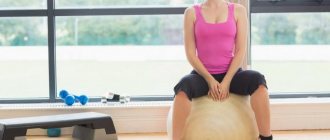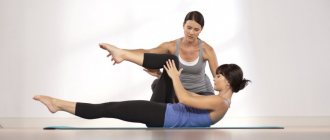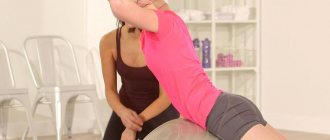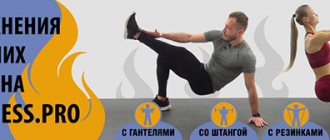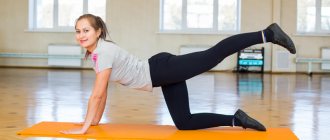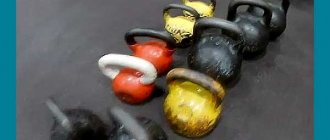Good morning everyone! Many of you, in moments of lack of energy, are concerned with the question - how to achieve an active, energetic life? An important step in this direction is the habit of starting the day with exercise, for example, the practice of greeting the sun “Surya Namaskar”. In yoga, this is a whole set of asanas aimed at rejuvenating the body.
And where, if not in our youth, were we so cheerful and managed to do everything? If you have not yet mastered this complex, then in this article you will find simple exercises to cheer up in the morning. Yoga in the morning for beginners has a whole range of advantages:
- allows you to start meditating right in bed;
- effectively warms up the spine;
- strengthens and tones the ligaments and muscles of the whole body;
- massage of internal organs ensures the launch and synchronization of their work throughout the day;
- Through conscious breathing practice, we harmonize our internal state and ensure an optimistic mood and the production of endorphins.
By doing a few simple exercises every morning, you will soon feel a gradual healing effect on your body. For me, wake up and breathe, then work out - and the morning turns into a magical ritual.
Train yourself to drink water in the morning on an empty stomach. Not cooked and at room temperature. We will discuss in detail where to get clean water or how to clean the water that flows through our pipes, how to properly structure water in further articles, follow the publications.
You can acidify the water to activate intestinal function. To do this, drop a little lemon juice or natural apple cider vinegar into the water.
Ginger added there will invigorate you better than any coffee. Experiment, listen to your body and together you will find what suits you.
Let's start warming up right in bed
It has been noticed that in the morning hours the body is measured and relaxed. With a fresh look, your consciousness gradually clears up and you have time to properly occupy it with future affairs. For each asana, choose a pace that is comfortable and suitable for you. In each pose, hold for 3 inhalations and exhalations. Pauses between poses are at your discretion.
We work to strengthen the spinal canal - sushumna. You woke up, stretched, now remove the pillow from under your head and lie on your back. Hands lie palms down, legs stretched as far as possible, toes pointing towards you.
Focus on the tailbone, feel how each vertebra stretches, allowing energy to flow freely. As you inhale, lift it up, slowly. First the stomach, then the chest, we held our breath. Exhale slowly, the chest drops, the stomach contracts.
If you want to slowly come out of sleep, keep your eyes closed. In order to wake up faster, on the contrary, keep your eyes wide open.
I also add a bending and stretching exercise here - lowering the bent legs alternately to the right and left. We put our thoughts in order, watching how the breath glides through the body. If we notice blocks, we remove them.
Having mastered this complex and supplemented it with classes with a trainer, you will more easily move towards achieving your own peaks!
- Next, we stretch and unload the lower back. On your back or side, first taking a baby pose, bend and press your legs tightly to your stomach. Then, grabbing our fingers, we wrap our arms around our legs. Without letting go of your fingers, we stretch and straighten your legs at the knees. After this exercise, completely relax and rest. That's it, it's time to get up!
- Open the curtains, ventilate the bedroom, drink some water and feel free to proceed to the second part. We stand in tatdasana, mountain pose, moving our big toes and heels towards each other. And we transfer the heaviness of the stomach to the feet. We stretch the back of our head up, stretching the spine. We press our palms tightly in front of our chests to each other, stand, breathe. Let's feel how the energy flows through our arms and hands, then relax them. We make sure that the shoulders do not rise.
- The time has come for intensive stretching of the back of the legs and the entire spine. We place our feet shoulder-width apart. Let's take a breath. Slowly bend forward as you exhale until your ribs touch your hips. We intertwine our hands in an elbow lock, straighten our knees. Your arms and head are hanging under their own weight, and at the same time, unload your neck!
- Now we lower our hands to the floor and step back up the hill with our feet. We straighten our knees and elbows and try to transfer our body weight from our arms to our legs. Breathing is smooth and calm, enjoying the inclusion of the whole body.
- From the slide we move into tree pose. We “root” our feet in the ground, and our hands, together with our stomach, stretch upward, towards the sun. You can either extend your arms parallel or join them, see which is more convenient for you. We stretched all the joints, bent over, let the solar prana into ourselves and lowered our arms to the sides. And, filled with energy, step into a new day!
The most important rules for yoga exercises
To achieve high effectiveness of yoga exercises, you must correctly follow the following rules:
- Practice under the guidance of a competent specialist - find a good mentor with whom you will enjoy working and who can very easily and completely explain to you all the difficulties of practice.
- Exercise often – To achieve visible results, you need to constantly exercise. If you are just starting to exercise, do it 2-3 times a week, gradually increasing the number of sessions until you can do the exercises once a day.
- Do all exercises on a blanket or mat in a well-ventilated area.
- The duration of the exercises for the first time exceeds 15 minutes. You can practice at any time convenient for you.
Note for beginners: If you do yoga in the morning, it's definitely worth spending 10-15 minutes relaxing. If you exercise in the evening, go to bed after exercising.
- During practice, breathe through your nose; breathing in yoga for beginners should be deep and rhythmic.
- Exercise only on an empty stomach.
- Yoga clothes made from natural fabrics that do not restrict your movements.
Ladies should remember that during their menstrual cycle you can only do relaxing exercises and during pregnancy they are only allowed to do light exercises.
Undoubted benefit
As you can see, warming up will not take much time, and in combination with a refreshing shower and a full breakfast, they will charge you with energy for further action. You can change the sequence of exercises; they will not affect the healing properties of the morning warm-up.
You will certainly get a boost of energy before work!
Dedicating 30 minutes to exercise every day or carving out time in the evening is a must-have program that you should start with. I took care of you and developed a 30-day yoga marathon. Its participants receive a 30-minute training plan daily by email, which includes a simple set of exercises and pranayama. You can get a free trial lesson.
Feel free to try it yourself and recommend reading the article to your friends! Be sure to share your impressions, ask questions in the comments, I’m interested in your opinion.
A set of exercises for morning exercises
When we talk about morning exercises, we are not talking about the fact that, having difficulty getting out of bed, you can make a couple of awkward movements and feel cheerful and active. This must be a well-thought-out complex that would trigger the body as a whole. My opinion is that the best set of exercises for morning exercises is a few yoga poses. They are called asanas.
The main advantage of yoga in the morning is that the asanas are static and allow you to very slowly and gradually “start” your body for the whole day. For myself, I have selected about 10 asanas, which I regularly perform in the morning after I wake up and take a contrast shower . They are so simple and effective that I immediately fell in love with them. The execution of each asana should be gradually increased to 2 minutes. As a result, the entire set of exercises will take you about 20-30 minutes. Meet, learn and implement!
Stretch pose
Intense stretching pose (Uttanasana) is one of the main yoga exercises for beginners; without mastering it, there is no point in starting more complex practices. Uttanasana strengthens the hips and knees, stretches the hamstrings, calves and thighs, elongates the spine, strengthens the abdominal, abdominal and lower back muscles, rejuvenates the lumbar nerves, reduces appetite and promotes weight loss, makes the figure more proportional, improves cerebral and pelvic circulation areas.
Morning complex for slimness and beauty
Thus, “Morning complex for slimness and beauty” is a short workout in the spirit of yoga. If you like to sweetly stretch and stretch the muscles that have become stiff during sleep, this morning complex with Katerina Buida is perfect for you. Slow, competent, stretching - what could be better to get a body that has not yet woken up to work? This complex is well suited for beginners, as it does not contain complex asanas and does not require perfect stretching.
Another similar program offered by Katerina Buida is the “Gentle Sunrise” morning complex. It activates all metabolic processes, triggers energy production and fills you with a feeling of success that does not disappear throughout the day.
Yoga for 15 minutes in the morning, which is easy to do at home
It is advisable to include a morning yoga routine for beginners only in regular asanas, which take 15 minutes to complete. More complex elements in the technical field require enormous energy, concentration and coordination. There are even more benefits if their implementation is postponed until the evening.
Before you begin your lesson, take time to invigorate yourself spiritually and regain your breath.
Setting a goal - 2 minutes
You need to take a comfortable position, close your eyes, relax and take 2 minutes to control the emotions in your body and the ideas that come to mind. There is no need to think about the question of what things await you.
If you feel tension in your body, gradually release it from your fingertips to your feet. You must agree to peace and quiet. The purpose of morning exercises is to track your emotions and evoke those that are needed.
Practice even breathing - 3 minutes
In this position, it is convenient to sit on the floor or carpet, which will be more comfortable. You should breathe through your nose and count to yourself. Inhale for 3 counts, exhale for 3 counts. If necessary, the length can be increased to 5-6 or vice versa. It is important that the body does not feel uncomfortable. Focus on your feelings.
If you exhale twice as long as you inhale, it will have a calming effect. For example, breathing is done in two counts, and exhaled in 4. After you have managed to smooth out your breathing, relax your mind and body, you can begin to perform asanas.
Yoga in the morning: recharge your energy for the whole day
In the article you will learn: 1. How to force yourself to do yoga in the morning 2. Morning asanas 3. Option for the lazy: do yoga in bed
If you want to feel how your body is filled with strength and energy after waking up, then you should start practicing yoga. This approach will prepare the body for stress and calm the mind, which will allow you not to experience tension and constraint in thoughts and actions during the day. Yoga in the morning guarantees an excellent mood for the whole day. How to approach the beginning of morning practice?
It will be important for those who want to lose weight to know that the fat burning process is most effective in the morning, when exercise is done on an empty stomach. At dawn, the level of glycogen in muscle fibers, liver, and insulin in the blood is at its lowest level, while growth hormone is at its highest, allowing the body to quickly burn fat. In addition, during morning practice, the body opens up the ability to easily perform any inverted asanas and twists without discomfort in the stomach. A similar practice in the evening is possible only with caution and after two hours from the last meal.
A gentle warming up of the body and a pleasant awakening is what the practice of morning yoga gives. To warm up the joints, sukshma vyayama is performed - special gymnastics, and to activate the sympathetic nervous system - breathing exercises.
To integrate morning yoga into your schedule, you must adhere to the following recommendations:
- Don’t immediately rush to significant achievements - it’s better to start practicing yoga twice a week, and set aside other days for a little warm-up.
- You can stick to the initial rhythm for six months or more - the result will still be good. When you feel that a larger volume of exercise does not exhaust you, but fills you with strength, you can increase the number of long sessions.
- Understand that for beginners to practice, the morning is the optimal time. To be able to take time for yourself without haste, it is recommended to wake up an hour earlier than usual and drink a glass of water.
- You need to increase the duration of training gradually. If you postpone getting up in the morning two hours earlier, instead of vigor, you may feel weak in your body, as well as a reluctance to continue exercising, which can lead to a breakdown.
- Set aside a day of rest. At the beginning of practice, this is especially important, so that the body can come to its senses and recover.
- Avoid intense training. If unpleasant sensations occur, it is recommended to pay more attention to breathing exercises and gentle twists that are performed while sitting. The main thing you should strive for during practice is trust in your own body. You need to learn to listen to your body. To achieve this goal, it is recommended to do more passive stretching in a lying position and eliminate inverted asanas and significant deflections. It is also important to remember meditation, calm music and aromatherapy.
Yoga options in the morning
One of the best ways to awaken the body with the sunrise is strength exercises - hatha yoga. With their help, you can rebuild the functioning of the body according to the biorhythms of nature. It is believed that a complex such as Surya Namaskar is only suitable for the morning. To this practice
dynamic exercises are included, which are designed to activate the work of the spine, joint tissues, give a charge of vigor and “turn on” the sympathetic system (part of the ANS responsible for the functioning of the heart, glands, intestines and other organs that are not connected with the human will).
One of the reasons why the morning is chosen to perform asanas is that a person has not yet gone through stress at work and worries over trifles. As long as the body has more strength and capabilities, and the level of concentration is high, there is every chance of becoming healthier by performing Surya Namaskar.
Only in the morning it is recommended to practice Shatkarmas (cleansing practices), as well as work with the stomach (do udiyana, nauli). All this is aimed at awakening the body and activating the internal fire - the body will be charged with energy for the day.
The results of regular training can be:
- Feeling better.
- Posture correction.
- Strengthening the immune system.
- Normalization of metabolism.
- Progress in body flexibility.
- Reducing exposure to stress.
- Clear, calm and effective thinking.
- Natural weight loss and/or maintaining normal body weight.
- Minimizing the physical manifestations of aging.
Morning asanas
According to many advanced yogis, the key to successful practice lies in devoting the morning hours to meditation. If a person has little time, then it is recommended to perform a yoga complex of meditation and pranayamas, having previously done Surya Namaskar - Sun Salutations - three times. This yoga routine is a feasible practice for beginners. You can do all the exercises - 12 asanas - in fifteen minutes. The recommended number of repetitions is three. Each asana in Surya Namaskar has its own meaning, so by following the order of their implementation, you can fill the body with solar energy for the whole day. During the implementation of a set of exercises, it is important to adhere to the breathing mode to achieve relaxation and oxygen saturation of the blood.
A beginner must understand that pranayamas are breathing exercises that help the body awaken from sleep and be filled with vital energy. If you neglect this practice, the classes will seem exhausting. Even if there seems to be insufficient time to complete the pranayam cycle, care must be taken to allocate it.
The positive effect of performing pranayamas is to warm the body, stimulate digestion and eliminate toxins. Such exercises are performed consciously, with understanding of the breathing process and concentration on it. The main condition for this practice is the need to perform pranayamas with a straight spine. Only in this position are conditions created for the easy movement of energy throughout the body.
A kind of morning yoga for beginners is a set of exercises that do not require getting out of bed. With this approach, you can gradually get involved and feel pleasure from the practice. To begin with, you can perform Balasanas (child's position with legs apart). You can start the practice with your eyes closed. The main purpose of such exercises is to stretch the hips, ankles, and back. If it is necessary to achieve an anti-aging effect, then inverted poses are performed to change the direction of gravity, the force of which constantly affects the human body.
The second pose to perform is Supta Baddha Konasana (lying butterfly position). With this position of the body, blood circulation and the work of the heart muscle improve, and the ligaments of the hip, groin, and knees are stretched. As a continuation of the cycle, Ananda Balasana (happy child's position) is performed, where the practitioner works on stretching the hip, knee and groin muscles. This practice also helps calm the mind and mitigate the negative effects of stress on the body during the day.
To stretch the back muscles, work out the organs, relieve stiffness, cleanse toxins and improve digestion, a lying twist is performed - Supta Matsyendrasana. To achieve stretching of the muscles of the hips, ankles, shoulders and chest, perform the cow pose - Gomukhasana. Sitting bends - Paschimottanasana - will help to have a beneficial effect on digestion and stretch the hamstrings, shoulder joints, and spine. It is necessary to begin the practice after the breathing has evened out so that it becomes measured and deep, and also after the thoughts have calmed down - they should flow slowly, without negativity and fears. To move on to other practices, you need to take a cross-legged pose - Sukhanasana. To do this, you need to sit with a straight back.
Rules for performing some asanas
Pranamasana . The exercise is done with a straight back, placing your legs side by side. Raising your head, stretch your spine, and bring your palms together in front of the thoracic region. At the moment of inhalation, the chest expands and the abdomen retracts in order to hold the breath and then smoothly exhale the air. It is during exhalation that you need to move on to the second asana.
Hasta Uttanasana . The hands raised behind the head during inhalation are held parallel to each other, and the back is arched. When exhaling, you must take the starting position. During practice, you must maintain smooth, relaxed movements so that there is no strong tension.
Ashva Sanchalasana . To take the required position, while inhaling, take a step back with one leg. With your toe resting on the floor, the pelvis is lowered until it feels comfortable. The head is pulled up and the back is straightened. The retained air is then exhaled.
Ahdo mukha shavanasana . When inhaling, place the right foot near the left foot and raise the buttocks. At the same time, the head lowers to the chest and exhales.
Ashtanga Namaskara . As you inhale, bend your legs to lower yourself to the floor. After touching the base of the surface with the chest and chin, the buttocks are raised. At the end of the exercise, exhale. This practice requires proper preparation, since it is usually quite difficult for beginners to bend down to touch their knees with their face. At first, a slight bend of the knees will be enough.
Bhujangasana . When inhaling, the back takes an arched position as a result of pushing the chest forward and up with the hands, as well as lowering the buttocks down. In a fixed position, exhale.
Padahastasana . After inhaling, bend forward so that your face touches your knees and your stomach touches your thighs. Holding the back of your legs with your palms, stretch your back without overstraining. After exhaling, move on to another asana.
Hasta Uttanasana . After inhaling air, put your hands behind your head parallel to each other and perform a deflection. After exhaling, take the starting position. Asanas that can be performed in bed
When you don’t have time or the mood for full practice in the morning, you can perform an effective set of exercises right in bed after waking up. This will help you gently wake up from sleep and enthusiastically take on your daily activities.
Eight gentle morning asanas:
- Child's pose. This exercise is considered universal. The knees are spread to the width of the pelvis so that the big toes are closed. When bending forward, the head is lowered onto the bed and the arms are extended forward. To experience relaxation, seven breaths are performed. ⠀
- Cat pose. To get on all fours, place your wrists directly under your shoulders and your knees under your pelvis. When exhaling air, you need to round your back and tilt your head. When inhaling, the exact opposite is done - the back arches, and the gaze is directed to the ceiling. This complex must be repeated five times.
- Tilt towards the feet. Sitting on the bed and straightening the spine and joined legs, bend and exhale. If there is a lack of stretching, it is recommended to bend your legs, since the main goal is to place the stomach on the thighs. The hold in this position should last for seven breaths.
- Lateral twist. Lying on your back, your left arm is extended to your side, where you direct your gaze, turning your head. The bent knees are lowered to the right, and the right hand is placed on the left knee. After several breathing cycles, the exercise is repeated, but with a turn to the other side.
- King of the Pisces Pose. While lying in bed, place your palms under the gluteal muscles. The upper part of the body is raised when inhaling and the head is lowered to the floor. At the same time, it is important to prevent the entire body weight from being transferred to the head, otherwise you can overload the neck. The delay in this position should last from three to six breaths.
- Happy child's pose. Continuing to lie down, bend your legs, place them on the bed, then clasp your heels with your palms and pull your knees to your chest. It is important that your heels are directed towards the ceiling. After this, you need to relax by doing deep breathing.
Many who practice morning yoga claim that there is no more effective way to cheer up. It's better than a cool shower or strong coffee. Try to find out whether this is true or not by practicing morning yoga and listening to the sensations of your own body!
We invite you to look at this selection of morning exercises that will charge you with the power of yoga in 20 minutes
Check out some more interesting articles:
- Benefits of yoga
- Yoga against the autumn blues
- Three best yoga exercises to do at home
- Effective ways to awaken vital energy using the Tibetan method
- 3 most powerful yoga poses
- Yoga Iyengar
- Travel horoscope for 2020.
- How white magic helps you lose weight
Improve Karma:
Two minutes of meditation
Yoga for energy for 15 minutes can be followed by relentless meditation. This may take more than 2 minutes. Lie on your back and relax all parts of your body. Place your arms at a 45° angle to your body, with your palms facing up. It is important to close your eyes and feel your body, every cell of it. Attention moves accordingly from the fingertips upward, ending at the back of the head.
Control your thoughts: don’t get carried away by them, remain an outside observer. Speak evenly and calmly. End the meditation properly with a deep breath. Stand up slowly, help yourself with your hands.
Morning yoga can be done with relaxing music.
How to wake up quickly with yoga
To ensure a bright and soft awakening, set the alarm clock at a time when the sun has not yet risen. To get out of bed, drink a glass of water, wash or take a shower - cleanse the body.
Then you can return to asanas, pranayama and meditative practices. Doing them early in the morning until 6 o’clock will give an excellent effect. The air at this time is very clean, and a person’s mental field is less filled with ideas and problems.
Before meditation and pranayama, it is correct to do the “salute to the sun” exercise three times. After this - breathing exercises, the purpose of which is to awaken the body and mind from sleep and fill the person with the corresponding strength. They allow you to warm up your body, kick start your digestive processes, and stimulate the elimination of toxins.
Pranayama is done with a straight spine: in this position the energy flow will flow correctly, passing through the entire body. Only after this can you begin the asanas described above.
The exercises are performed calmly, relaxed and slowly. You cannot make sudden movements.
Exercise in the morning is the best solution for those who want to not only use it correctly and profitably, but also start the day. Such a charge will be filled with energy, strength, tone the body and help you feel happy all day. And even beginner yogis can do this.
Main part of the exercise: yoga poses, yoga lesson 15 minutes
The necessary criterion that should be observed when practicing yoga, instead of exercise, is the following: when taking poses, you need to breathe smoothly, evenly, deeply. Through this approach, it will be possible to achieve consciousness, establish a strong connection between mind and body, and achieve balance, which is fundamental to the body.
Each pose should take 2-2.5 minutes.
Child's Pose
Child's pose opens morning asanas. To do this, it is advisable to sit on your heels, spread your legs and tilt your body forward so that you can lower your forehead in front of you. Both arms are extended forward, chest on the knees. While the posture is being maintained, a person's breathing should be focused on the upper body, while while breathing it is important to try to relax as much as possible so that you can collapse even more.
Balasana, as baby's pose is called, helps relieve tension in the shoulders, chest, neck and spine. With proper breathing, the internal organs are massaged. This asana has a beneficial effect on the nervous system, calms the brain and improves blood circulation. Has an excellent effect on the lower body: stretches the muscles and tendons in the legs, reduces the fat layer on the thighs.
Bridge pose, pelvic tilt
Morning yoga should include bridge pose. It helps relieve back tension and tension, promotes rejuvenation, and heals the body.
To perform it, you need to lie on your back, placing a thick blanket under your neck and shoulders. We bend our legs so as to move them as close to the buttocks as possible. When you inhale, the tailbone lifts off the floor and rises, and the buttocks are not pinched, but strengthened. Legs and feet should be on the same track. The arms, which are extended along the body, are locked and held outside under the pelvis.
The buttocks should be raised so that the legs are parallel to the floor surface. The knees are directly above the heels. At this time, your palms lie on the floor so that there is space between them. The chin is slightly raised from the chest.
Cat-cow pose
It is used in yoga to receive and grow energy. Asana allows you to relieve stress on several levels at once. Movements become more relaxed, the back is straight. By constantly performing this pose, you can strengthen your abdominal muscles, make your spine more elastic, and relieve back pain. Helps develop flexibility.
To do this, you need to get on all fours so that your palms are directly under your shoulders and your knees are next to your hip joints. The fingers should move apart: the middle fingers should be oriented forward, and the rest should be oriented to the side.
You cannot lean on your toes; the heels should be spread in different directions. As you inhale, try to bend your back as deeply as possible and keep the back of your head extended upward, with your head pointing toward the ceiling. As you exhale, the head turns toward the chest and the back bends upward, forming an arch.
As you perform the exercise, make sure your arms remain vertical. Do up to 8-10 repetitions while in this position.
Head down dog pose
This asana can be included in your daily warm-up. The position helps strengthen the upper body, back, relieves tension in the chest, tightens the leg muscles, and keeps the body in good shape.
To perform the asana, you need to get on all fours with your knees below your hips and your palms below your shoulders. When you inhale, your legs begin to rise and your knees immediately straighten. The human body forms an inverted Latin letter V.
The fingers should be spread apart. The palms are pressed to the surface of the floor, the head is bent and trying to see the navel. We remain in this position for 1-2 minutes, after which we bend our knees and lower them to their original position.
Standing Forward Bend Pose
Morning yoga will definitely include a bending asana. A more common exercise would be a standing frontal twist. To do this, you need to stand straight, straighten your shoulders, put your feet next to each other.
The arms straighten and hold themselves. As you inhale, they begin to lean forward and try to bring their forehead very close to their feet. The legs should be secured with the arms to lower the upper body more deeply. The main thing is not to bend your knee joints.
Tree pose
To wake up, use tree pose. While in this asana, it is advisable to try to expose yourself to the influence of the tree through the roots (legs), on which the energy of the earth enters the trunk (body).
The asana is performed in a standing position. Legs are placed parallel to each other, held together. After inhaling, they begin to raise their straight arms up on the sides of the body, after which they connect their palms to each other above their head.
Biceps touch ears. The whole body should be pointing upward, but not on the toes. Then one leg is bent at the knee, and the foot is placed on the inner side of the thigh, in its upper part. They remain in this position for one minute, then return to the starting position and repeat the exercise on the other leg.
Inhalation and exhalation during the asana should be the same.
Warrior Pose
To pose as a warrior, it is important to stand up straight with your legs together and your feet pressed together. The chest and shoulders are relaxed. Look ahead. As you exhale, you need to take a big step back. The distance between the legs is 100-120 cm. The legs are pressed to the floor: the front one is in front, the back one is at an angle of 45 ° inward. The front knee should be bent at a 90-degree angle, distributing the weight evenly on both legs.
The arms are extended to the sides, the back of the head is facing upward, the neck is slightly taut, and the face is looking forward. Breathe through your nose evenly and consciously. Stay in this position for one minute, then do the same with the other leg.
